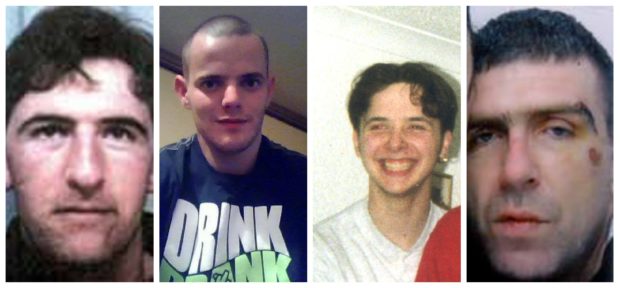More than eight calls to report a missing person are made to police in Fife every day.
From April to December last year, officers in the kingdom dealt with a total of 2,265 such calls.
Full missing person investigations were launched into 998 of the reports, each of which took up an average of eight “officer hours”.
The figures were reported to Fife councillors on Thursday to illustrate the changing demands being placed on the force.
Chief Superintendent Derek McEwan said the presence of 39 care homes in Fife, accommodating looked-after children from all over Scotland, was one reason for the high numbers.
In his report, the Fife Division commander said: “The nature of calls that the police are attending has changed significantly with more and more concern for person calls being received.
“Many of these calls are in relation to missing person reports/inquiries.”
Mr McEwan said a partnership group formed for missing people in December 2018 had resulted in around 90 fewer calls a month to Fife Division.
He added: “This work continues and Police Scotland remain vigilant in our investigation and recording of missing persons and the severity of each individual report.”
Most calls reporting a person missing last year were resolved relatively quickly.
Less than half of the cases were progressed to the stage where the individual was officially recorded as missing, sparking an investigation.
Councillors were told very few missing person reports end in tragedy.
There have been a number of high-profile hunts in Fife in recent years. In September 2017, Libbi Toledo, 17, was found dead in Kirkcaldy after a nine-day search.
Less than a year later the body of student Duncan Sim, 19, washed up in St Andrews three months after he disappeared following a night out.
On Sunday the body of 72-year-old Robert Brown, of North Shields, was found after he boarded a train in Kirkcaldy for Newcastle but never reached his destination.
The highest volume of missing person calls in the nine months to the end of last year – 629 – were from the Kirkcaldy area. Mr McEwan said this was due to it being the location of Fife’s accident and emergency centre and Whyteman’s Brae Hospital.
Of the 998 calls which resulted in someone being recorded as missing, 584 related to children, with 378 of those for looked-after children.
Mr McEwan said neighbouring Tayside and Edinburgh had “nowhere near” as many children’s homes as Fife.
He said: “The challenge we have faced in Police Scotland in dealing with some of the missing people we have is that we have four local authority care homes and 35 private care homes for looked-after children.”
Missing person cases are considered a high-risk policing area, Mr McEwan said, and given appropriate priority and resource.
Where a missing person is deemed at high-risk of harm, he said, every police officer available will “down tools” and be drafted into the hunt.
He said: “Usually going missing is an indicator of other underlying issues and these indicators cannot be ignored, even if traced relatively quickly.”
Most missing people are traced within 48 hours but appeals were reissued earlier this week for four Fife people who have not been seen for years.
They are Allan Bryant, who went missing more than six years ago, Kenneth Jones, not seen since 1998, Sandy Clarke, who disappeared in 2013, and Peter McGuire, missing since 1993.
Allan was 23 when he disappeared on November 3, 2013, after a night out in his home town of Glenrothes.
His family have led a high-profile campaign in the hope of discovering what happened to him after he left the Styx Nightclub just after 2am.
Kenneth was 18 when he left his home, also in Glenrothes, on November 3, 1998.
Despite extensive inquiries there have been no confirmed sightings of him since.
Peter, of High Valleyfield, was last seen leaving Carnegie Swimming Pool on January 27, 1993, when he was 21.
His car was found near the Forth Road Bridge. There were no further sightings of him and no information regarding his whereabouts.
In November 2016 police received information that a man using his name and date of birth was living rough in the Hastings area but the individual moved on, possibly to the west London area.
Sandy was last seen in the early hours of June 4, 2013, leaving Victoria Hospital, in Kirkcaldy, and walking along Hayfield Road.
